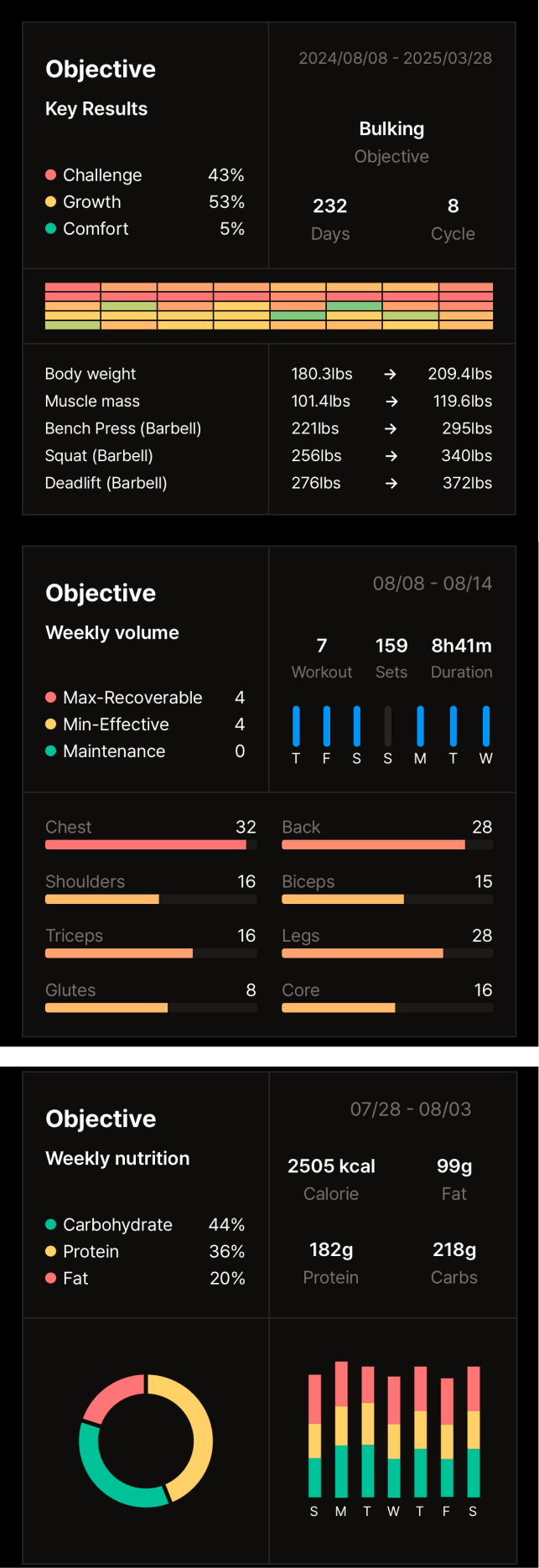How to Plan a Workout Cycle (4-Week, 12-Week, Annual Plan)
Introduction
Imagine achieving your fitness goals with a structured plan that keeps you motivated and progressing steadily. What if you could transform your workout routine from chaotic to coherent, ensuring consistent improvements? This blog will guide you through planning a workout cycle, whether for 4 weeks, 12 weeks, or an entire year. We'll explore periodized training, which helps balance different fitness goals like strength building and endurance. Consider how even recreational athletes meticulously plan their training to avoid plateaus and injuries. You can apply these principles to your routine, no matter your fitness level. By the end of this guide, you'll be equipped with the tools to create a personalized workout plan that aligns with your fitness aspirations.
Understanding Workout Cycles
The Concept of a Workout Cycle
A workout cycle is a structured plan that outlines your training schedule for a specific period. It's essential for organized progression, preventing aimless workouts and maximizing results. Periodization, a key element of workout cycles, involves varying training intensity and focus over time. This structured approach helps prevent plateaus, reduces the risk of overtraining, and optimizes your body's adaptation to different stimuli.
Benefits of Structured Training
Structured training, particularly through workout cycles, offers numerous benefits. Improved performance is a key advantage, as targeted training phases lead to noticeable gains in strength, endurance, or other fitness metrics. Injury prevention is another crucial benefit. By gradually increasing intensity and incorporating rest periods, you minimize the risk of overuse injuries. Finally, structured plans enhance motivation by providing clear goals and tracking progress, keeping you engaged and focused on your fitness journey.
Planning a 4-Week Workout Cycle
Setting Short-Term Goals
Before designing your 4-week workout cycle, identify specific, measurable, achievable, relevant, and time-bound (SMART) goals. This provides direction and helps tailor your plan effectively. Common 4-week objectives include:
- Increased Strength: Lifting heavier weights or performing more repetitions.
- Improved Cardiovascular Fitness: Running longer distances or increasing workout intensity.
- Weight Loss: Reducing body fat percentage through exercise and dietary adjustments.
- Enhanced Flexibility: Improving range of motion and joint mobility.
- Building a Consistent Exercise Habit: Establishing a regular workout routine.
Designing Your 4-Week Plan
A sample 4-week plan might include three strength training days, two cardio days, and two rest or active recovery days per week. Strength training could focus on different muscle groups each day (e.g., legs, back/biceps, chest/triceps). Cardio could include running, swimming, or cycling. Rest and active recovery are crucial for muscle recovery and injury prevention. Remember to balance intensity and recovery for optimal results.
Customizing for Specific Needs
Adjust the plan based on your fitness level and goals. Beginners might start with lower weights and fewer repetitions, gradually increasing intensity. Those focusing on endurance might prioritize longer cardio sessions. A table comparing different focus areas can help visualize customization:
| Focus Area | Training Emphasis | Example | |---|---|---| | Strength | Resistance training with heavier weights, fewer reps | 3 sets of 5-8 reps | | Endurance | Longer duration cardio, moderate intensity | 30-60 minutes of running | | Weight Loss | Combination of cardio and strength training, calorie deficit | Circuit training, HIIT |
Creating a 12-Week Fitness Program
Medium-Term Planning and Its Importance
A 12-week program allows for more substantial progress and habit formation. It provides ample time to focus on specific training goals, build a solid foundation, and see measurable improvements. This longer timeframe enables a phased approach, maximizing long-term gains.
Structuring Your 12-Week Schedule
A 12-week program often involves three phases:
- Foundation Building (Weeks 1-4): Focus on building a base level of fitness and learning proper exercise techniques.
- Strength Building/Hypertrophy (Weeks 5-8): Increase training volume and intensity to challenge your body and promote significant gains.
- Performance/Peak (Weeks 9-10): Concentrate on maximizing strength or endurance gains.
- Rest and Recovery (Weeks 11-12): Gradually reduce training volume to allow your body to recover and prepare for future cycles.
Incorporating Variety and Recovery
Cross-training, involving different types of exercise, helps prevent boredom and overuse injuries. Active recovery, like light yoga or walking, promotes blood flow and reduces muscle soreness. Maintaining motivation over 12 weeks requires strategies like rewarding yourself for milestones achieved and finding a workout buddy for accountability.
Designing an Annual Training Plan
Long-Term Vision and Goal Setting
An annual training plan provides a comprehensive roadmap for your fitness journey. It allows you to set long-term goals, such as running a marathon or achieving a specific body composition, and break them down into manageable phases. This long-term perspective promotes consistency and prevents short-term setbacks from derailing your progress.
Breaking Down the Year: Training Blocks
Annual plans utilize different training blocks:
- Macrocycles (Year-Long): The overall annual plan encompassing all training phases.
- Mesocycles (Several Weeks/Months): Specific training blocks within the macrocycle, focusing on particular goals (e.g., strength building, endurance training).
- Microcycles (Weekly): Weekly training schedules within a mesocycle, detailing specific workouts and rest days.
Adapting to Life Changes and Challenges
Life events, injuries, or changes in goals may require adjustments to your annual plan. Flexibility is key. Regularly reflect on your progress and be prepared to recalibrate your plan as needed. Don't be discouraged by setbacks; view them as opportunities to learn and adapt.
Conclusion
Summary of Key Insights
Structured workout cycles, whether 4 weeks, 12 weeks, or a full year, are crucial for achieving fitness goals. They provide a framework for progressive overload, injury prevention, and sustained motivation. Start with a shorter cycle and gradually expand to longer-term plans as you gain experience.
Call to Action and Further Resources
Begin your workout planning journey today! Start with a 4-week plan and experience the benefits of structured training. Explore resources like fitness apps, online guides, or consult a certified personal trainer for personalized guidance. Remember, consistency and a well-defined plan are your keys to unlocking your fitness potential.

